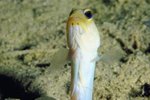Despite their formidable appearance, black longspine urchins (Diadema spp., usually Diadema setosum) are sensitive creatures who require a carefully balanced habitat. Ensuring your prickly pets thrive or even merely survive takes dedication. Urchins are not creatures to introduce shortly after setting up your tank. Wait until the aquarium ecosystem has been running for several months.
Tank
The various species of black longspine urchins are omnivores. Their diet consists mainly of algae along with other, meatier items they come across while foraging. To ensure a plentiful food supply, as well as to avoid fluctuations in water chemistry, which can be lethal, they need a large, well-established tank. The minimum size is about 25 gallons; it should have been established for at least 6 months, preferably longer, before you introduce your urchins.
Water Parameters
These urchins need a tank heated to about 73 to 81 degrees F. The water should have a specific gravity of around 1.027 to 1.028 and a fairly high pH of about 8.1 to 8.4, according to Maidenhead Aquatics. Take care to avoid any fluctuations in temperature or water chemistry, which can be lethal.
Accessories
Include plenty of rocks arranged to form caves and crannies, not only to provide surfaces for algae to grow on but also to give your urchin somewhere to hide. Diadema urchins can be retiring; they need somewhere to shelter during the day.
Diet
Although the urchins will get most of their food from the tank, this might not be enough, especially if the tank is not that large or you have other algae eaters. Supplement the diet with sinking algae-based pellets and occasional pieces of meaty foods, such as shrimp.
Special Considerations
Because of the sensitivity of these species to changes in the surrounding water, take special care when conducting regular partial water changes, always ensuring that the replacement water is of the exact same temperature and chemistry as that in the tank.
Longspine sea urchins can coexist peacefully with some other creatures but certainly not all aquatic pets. Large aggressive fish, such as puffers and parrotfish, might not be able to eat an urchin but they can break off spines and engender stress.
In turn, the urchins can pose a threat to certain sessile invertebrates, including corals. Black longspine sea urchins might not be as destructive as related species, but they are not 100 percent reef-safe. Provided you supply enough food, however, they shouldn’t be too much of a problem.
References
Writer Bio
Judith Willson has been writing since 2009, specializing in environmental and scientific topics. She has written content for school websites and worked for a Glasgow newspaper. Willson has a Master of Arts in English from the University of Aberdeen, Scotland.



